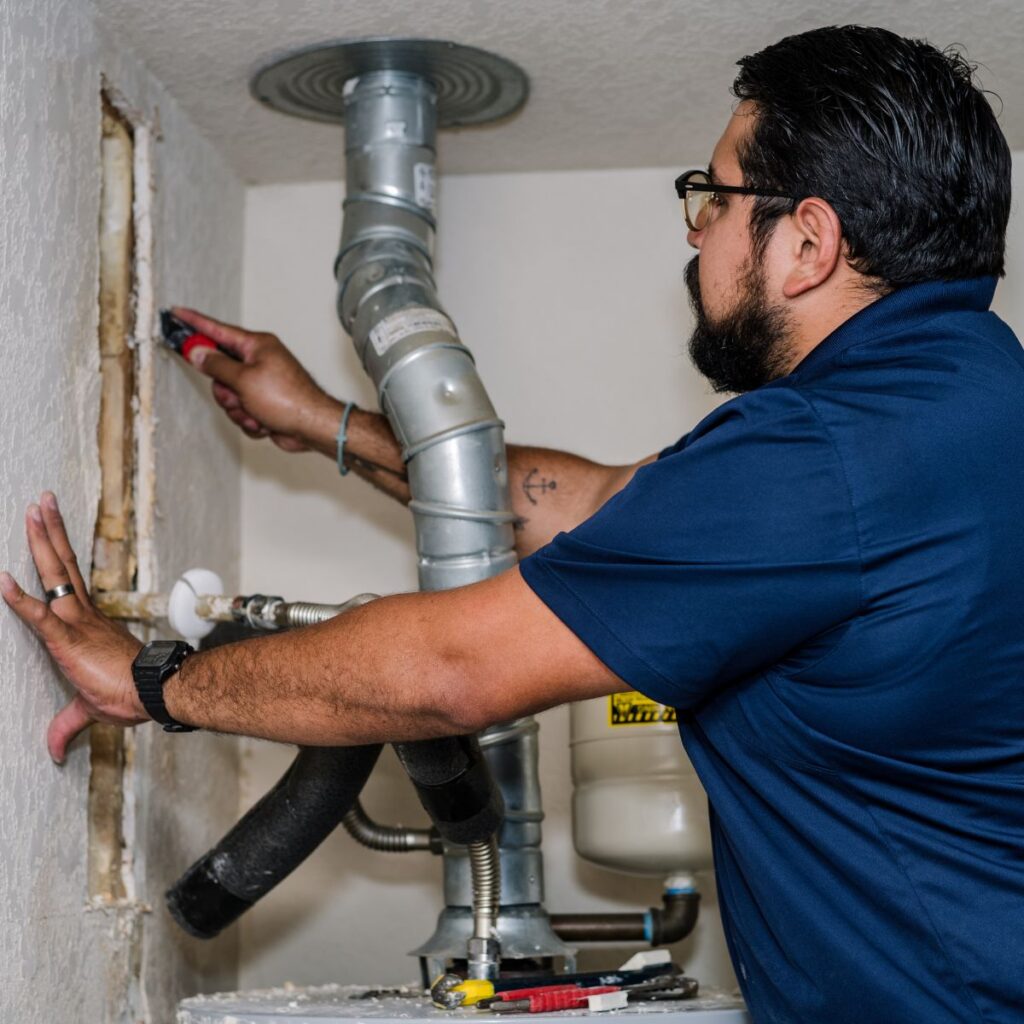Drywall Repair Ogden UT offers professional services that complement Interior Painting.
Wiki Article
Important Tips for Effective Drywall Repair Work and Setup Strategies
Effective drywall repair work and installment needs a cautious technique. Recognizing the sorts of drywall and having the right tools is essential. Proper methods and accurate dimensions can substantially influence the outcome. Lots of overlook vital steps like taping and fining sand, which can make or break the final appearance. As tasks progress, usual challenges may develop that call for attention. Exploring these ideas can lead to a more sleek and successful surface.Understanding Various Sorts Of Drywall
Recognizing the numerous kinds of drywall is vital for any type of effective fixing or setup project. Drywall, commonly called plaster board, is available in a number of selections customized for particular applications. Criterion drywall is the most extensively made use of type, ideal for general indoor walls and ceilings. Moisture-resistant drywall, typically environment-friendly in color, is designed for locations susceptible to moisture, such as restrooms and kitchens. Fire-resistant drywall, generally tinted pink or purple, is crafted to hold up against greater temperatures and is often used in garages or near furnaces. Furthermore, soundproof drywall helps in reducing noise transmission, making it appropriate for multi-family homes or videotaping studios. Specialized drywall, like concrete board, is used in damp locations like showers or tub surrounds. Comprehending these types aids in selecting the best product for each job, ensuring longevity and effectiveness out of commission or new installations.Crucial Devices for Drywall Repair Work and Installment
Having the right devices is crucial for reliable drywall repair work and installment. A top quality utility blade is critical for cutting drywall sheets exactly. A drywall T-square helps guarantee straight edges, while a taping blade is required for applying joint substance efficiently over joints. Additionally, a drywall saw permits eliminating damaged areas or suitable drywall around fixtures.For hanging drywall, a power drill with drywall screws is essential, as it allows quick and safe installment. A degree is also important to validate that the drywall is straight and properly lined up. A sanding block or post sander is crucial for smoothing out joint compound once it has actually dried out. A measuring tape is critical for exact dimensions, avoiding waste and ensuring an appropriate fit. Equipped with these tools, people can tackle drywall tasks effectively, causing professional-looking results.
Step-by-Step Overview to Repairing Holes and Cracks
When dealing with openings and cracks in drywall, having the right tools and products is important for a successful repair service. This overview describes the required items and offers a clear, detailed procedure to properly bring back the surface area. Recognizing these elements will assist assure a seamless surface and long-lasting outcomes.Devices and Products Needed
A well-equipped toolkit is essential for effective drywall repair and installation. Key tools consist of an utility blade for reducing drywall, a tape measure to assure exact sizing, and a drywall saw for larger holes. A putty knife is vital for applying joint substance efficiently, while a fining sand block or pole sander helps attain a smooth surface. For patching, a roll of fiberglass harmonize tape or paper tape is necessary to reinforce joints. In addition, a drill and screws are needed for securing new drywall pieces. Essential products are composed of joint compound, primer, and paint to complete the repair work. Having these devices and materials handy guarantees a smoother, a lot more efficient repair click for more info process, generating professional-looking results.Repair Work Refine Steps
Fixing holes and fractures in drywall calls for an organized method to guarantee a seamless finish. The area bordering the damages should be cleansed extensively to eliminate dirt and debris. Next, for small fractures, a putty knife is used to use a joint substance evenly over the area. For bigger openings, a spot is essential; the harmed area is removed, and a brand-new piece of drywall is fitted in place, safeguarded with screws. Once the spot is in setting, joint compound is put on blend the sides. After drying out, fining sand the area smooth is essential. The fixed surface area must be keyed and painted to match the surrounding wall surface, making sure an inconspicuous repair work.Strategies for Installing Drywall Panels
Setting up drywall panels requires mindful preparation and precise implementation to assure a specialist and smooth coating. It is vital to determine the wall room accurately and cut the panels to fit, making certain that they straighten with the studs. Positioning the panels flat is usually advised, as this can improve the structural honesty and minimize the variety of joints.Making use of drywall screws, installers should secure the panels every 16 inches along the studs, making certain a company hold. It is vital to stay clear of overdriving the screws, which can harm the paper surface. For edges and edges, using an utility blade permits tidy cuts and a tight fit.

Finishing Touches: Insulation, Mudding, and Fining sand
Once the drywall panels are securely in position, the following important action includes the complements of taping, mudding, and sanding. Taping is very important for creating a seamless shift in between panels and concealing joints. A top quality drywall tape, either paper or fiberglass mesh, ought to be applied over the joints, guaranteeing it adheres appropriately to the mud that will certainly be used next.Mudding, or using joint compound, follows the taping procedure. This substance loads gaps and smooths out the surface area. A very first coat should be used kindly, feathering the sides to mix with the drywall. After the preliminary coat dries out, succeeding layers might be required for a remarkable coating.
Finally, fining sand is needed to achieve a smooth surface area. A fine-grit sandpaper should be utilized to gently ravel any blemishes. Care needs to be taken to prevent over-sanding, which can harm the drywall - Interior Painting. Appropriately implemented, these ending up touches produce an expert appearance ready for painting
Tips for Maintaining Your Drywall After Installation
Maintaining drywall after setup is essential to preserving its appearance and structural integrity. Regular cleansing is required; dust and dust can build up, so gentle wiping with a damp towel is suggested. Property owners should likewise check for any indicators of wetness or mold and mildew, particularly in high-humidity areas like kitchen areas and shower rooms. If any kind of damage happens, it is very important to address it quickly to avoid additional concerns.Utilizing furniture pads can assist avoid scrapes or damages from hefty items. In addition, painting the drywall with a high-quality, cleanable paint supplies an additional layer of defense and makes future cleaning much easier. Stay clear of using abrasive cleaners or devices, as these can damage the surface area. Preserving a secure indoor climate with suitable moisture levels will certainly aid prevent cracking or contorting over time. By following these tips, one can guarantee that drywall continues to be in superb problem for many years to find.
Frequently Asked Concerns
The Length Of Time Does Drywall Take to Fully Dry After Setup?

Can I Mount Drywall Over Existing Drywall?
Yes, drywall can be installed over existing drywall, yet it is necessary to assure the underlying surface is safe and sufficiently prepared. This method can enhance insulation and minimize installment time, though it might add weight.What Is the Best Means to Soundproof Drywall?
The very best way to soundproof drywall involves using specialized soundproofing materials, such as durable networks, acoustic caulk, and sound-dampening drywall. These methods successfully reduce audio transmission in between spaces, improving general acoustic performance in living areas.Just how Do I Select the Right Drywall Density?
To choose the ideal drywall have a peek at this website thickness, take into consideration the application and area. Requirement residential walls typically use 1/2 inch, while ceilings or specialized locations might need 5/8 inch for added toughness and soundproofing capabilities.Are There Eco-Friendly Drywall Options Available?
Yes, eco-friendly drywall options are available. These consist of items made from recycled materials, plaster boards with reduced unpredictable organic compounds (VOCs), and those making use of lasting manufacturing processes, using environmentally-conscious selections for building and remodelling tasks.Having the right tools is vital for reliable drywall repair work and setup. For hanging drywall, a power drill with drywall screws is important, as it allows fast and secure installment. Secret devices include an utility knife for cutting drywall, a tape action to assure accurate sizing, and a drywall saw for larger holes. Yes, drywall can be mounted over existing drywall, but it is necessary to ensure the underlying surface area is secure and appropriately prepared. The finest method to soundproof drywall entails utilizing specialized soundproofing products, such as durable channels, acoustic caulk, and sound-dampening drywall.
Report this wiki page